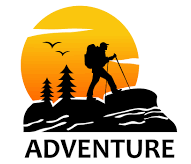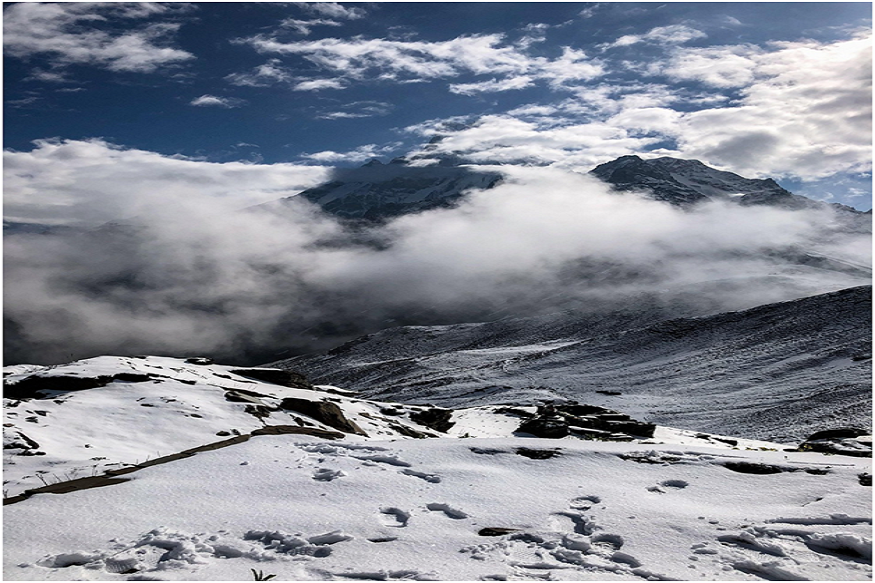Nepal, the land of towering mountains and ancient culture, is more than just Everest. Tucked away from the mainstream trekking crowds lie some of Nepal’s most rewarding yet lesser-known trails. The Mardi Himal Trek, Langtang Valley Trek, Pikey Peak Trek, and Annapurna Base Camp Trek offer crude magnificence, social lavishness, and quiet ways for travelers looking for something past the normal. These covered up pearls uncover the soul of Nepal—untouched scenes, veritable neighborliness, and trails that remain with you until the end of time.
Mardi Himal Trek – Overview and Highlights
Overview
Mardi Himal Trek is one of Nepal’s most charming brief treks. Settled fair east of the celebrated Annapurna Base Camp path, it climbs through lavish rhododendron woodlands, elevated glades, and closes with a jaw-dropping sea of Machhapuchhre (Fishtail peak) and the Annapurna run. Less swarmed and off-the-beaten-path, it culminates for those needing quietness with staggering Himalayan backdrops.
7 Highlights of Mardi Himal Trek
- Close-up views of Machhapuchhre and Annapurna South.
- Serene forest trails with colorful rhododendrons.
- A quiet, peaceful route with fewer trekkers.
- Panoramic views from Mardi Himal Base Camp.
- Traditional Gurung and Magar villages.
- Short yet fulfilling—ideal for 5–7 days.
- Teahouses offer local warmth and hospitality.
Langtang Valley Trek – Overview and Highlights
Overview
The Langtang Valley Trek lies to the north of Kathmandu and is a classic path through frigid valleys and tough Himalayan scenes. After the 2015 seismic tremor, the path has recaptured its charm and proceeds to welcome trekkers who need bona fide nature and social encounters.
7 Highlights of Langtang Valley Trek
- Stunning views of Langtang Lirung and surrounding peaks.
- Rich Tamang and Tibetan-influenced culture.
- Visit to Kyanjin Gompa and yak cheese factory.
- Opportunity to summit Tserko Ri (5,000m).
- Walk through rhododendron and pine forests
- Wildlife including red pandas and Himalayan tahrs.
- Easy access from Kathmandu—ideal for limited schedules.
Pikey Peak Trek – Overview and Highlights
Overview
Pikey Peak trek is a covered up diamond in the lower Solu locale, advertising breathtaking dawn views over Everest, Makalu, and other mammoths. It’s a less strenuous journey that combines peak scenes, Buddhist religious communities, and Sherpa legacy. Sir Edmund Hillary himself said the sea from Pikey peak was his favorite in all of Nepal.
7 Highlights of Pikey Peak Trek
- Mesmerizing sunrise over Everest and the Himalayas.
- Visit to ancient Buddhist monasteries and chortens.
- Experience authentic Sherpa culture without the EBC crowd.
- Offbeat trail with peaceful landscapes.
- Suitable for all age groups and skill levels.
- Dense forests, meadows, and open ridgelines.
- Ideal short trek—5 to 7 days.
Annapurna Base Camp Trek – Overview and Highlights
Overview
The Annapurna Base Camp Trek Is an incredible course that takes you profoundly into the heart of the Annapurna Asylum. Towering peaks encompass you from all sides, with Annapurna I (8,091m) being the crown gem. It’s a blend of characteristic greatness and social investigation through Gurung and Magar towns, terraced areas, and differing biological systems.
Highlights of Annapurna Base Camp Trek
- Breathtaking 360° view from Annapurna Base Camp.
- Traverse through forests, waterfalls, and rice terraces.
- Hot springs at Jhinu Danda for post-trek relaxation.
- Meet the Gurung and Magar communities.
- A well-established and safe trail with varied terrain.
- Lush bamboo and rhododendron forests.
- Trekking under the shadow of Annapurna South and Hiunchuli
Why Choose These Treks
These four treks—Mardi Himal, Langtang, Pikey Peak, and Annapurna Base Camp—offer more than just stunning views. They’re ideal for trekkers who want to escape the crowd and dive into Nepal’s authentic culture and raw beauty. Each trek has something unique: Mardi for dramatic ridge views, Langtang for glacier valleys, Pikey for Everest vistas without the exertion, and ABC for the iconic Himalayan amphitheater. They balance difficulty and accessibility, making them perfect for beginners and seasoned trekkers alike.
Itineraries for These Treks
- Mardi Himal Trek (5–7 Days):
Day 1: Drive to Kande, trek to Deurali
Day 2: Trek to Forest Camp or Low Camp
Day 3: Trek to High Camp
Day 4: Sunrise hike to Mardi Base Camp, descend
Day 5–6: Return via Siding or Landruk, drive back to Pokhara
- Langtang Valley Trek (7–9 Days):
Day 1: Drive to Syabrubesi
Day 2–3: Trek through Lama Hotel to Langtang Village
Day 4: Trek to Kyanjin Gompa
Day 5: Hike Tserko Ri, explore
Day 6–7: Return to Syabrubesi, drive to Kathmandu
- Pikey Peak Trek (5–7 Days):
Day 1: Drive to Dhap
Day 2: Trek to Jhapre
Day 3: Trek to Pikey Base Camp
Day 4: Sunrise hike to Pikey Peak, descend to Loding
Day 5–6: Trek to Phaplu, return to Kathmandu
- Annapurna Base Camp Trek (7–11 Days):
Day 1: Drive to Nayapul, trek to Ghandruk
Day 2–4: Trek via Chhomrong to Himalaya
Day 5: Reach ABC
Day 6: Return via Bamboo and Jhinu Danda
Day 7–8: Trek out to Nayapul, drive to Pokhara
Best Time to Trek
The ideal seasons for all four treks are:
- Spring (March–May): Rhododendrons bloom in full color, clear skies, and pleasant temperatures.
Cultural Experience
Each trail immerses you in a different cultural landscape:
- Mardi Himal: Gurung and Magar villages with traditional homes and vibrant attire.
- Langtang Valley: Strong Tibetan Buddhist influences—mani walls, gompas, and prayer flags.
- Annapurna Base Camp: Gurung hospitality, traditional dances, and charming tea villages.
Cultural exchanges through homestays, monastery visits, and daily interaction with locals make these treks more than just hikes—they are soulful journeys.
Food and Accommodation
- Accommodation: All treks offer comfortable tea houses with basic amenities. Rooms are generally twin-sharing with shared bathrooms. Annapurna and Langtang routes have more developed options, while Pikey and Mardi remain more rustic.
- Food: Expect Dal Bhat (rice, lentil soup, curry), momos (dumplings), fried rice, noodle soup, eggs, porridge, and Tibetan bread. Local produce, organic greens, and yak cheese are often available, especially in Langtang and ABC regions.
All Other Guidance for All Trekkers
- Permits:
- Mardi Himal & ABC: TIMS card and Annapurna Conservation Area Permit (ACAP)
- Langtang: TIMS card and Langtang National Park Permit
- Pikey Peak: TIMS and Gaurishankar Conservation Area Permit (if going via Jiri)
- Health & Safety: Stay hydrated, ascend slowly, and watch for altitude sickness above 3,000m. Always carry a basic medical kit.
- Connectivity: Mobile networks (NTC and NCell) work intermittently. Wi-Fi is available at some teahouses, but not guaranteed.
- Guides and Porters: Hiring a licensed guide enriches the trek with cultural insight and added safety. Porters lighten your load and support the local economy.
Tips for a Perfect Tour for All Trekkers
- Train beforehand with cardio and light hiking.
- Pack light but wisely—include a down jacket, thermal layers, rain gear, water purification tablets, and a headlamp.
- Use trekking poles for balance and knee support.
- Start early each day to avoid afternoon clouds.
- Bring cash—ATMs are unavailable on the trail.
- Respect local culture—ask before taking photos and dress modestly.
- Travel insurance is essential and should cover helicopter evacuation.
Conclusion
The covered up trails of Nepal—Mardi Himal, Langtang Valley, Pikey peak, and Annapurna Base Camp—offer more than fair lovely views. They offer stories, quiet, convention, and change. Whether you’re looking for otherworldly comfort, high-altitude experience, or social submersion, these trails convey. Step off the beaten way and find the calmer corners of the Himalayas. Nepal’s heart beats most grounded where few feet tread.
FAQs
Q1: Are these treks suitable for beginners?
Yes, especially Pikey Peak and Mardi Himal. Langtang and ABC require moderate fitness but no technical skills.
Q2: Do I need a guide for these treks?
While solo trekking is allowed on some routes, a guide enhances your safety and cultural experience, especially in Langtang and ABC.
Q3: Can I do these treks in the winter?
Yes, though prepare for snow and colder temperatures. ABC and Langtang may be challenging during heavy snowfall.
Q4: What permits are required?
You’ll need TIMS and regional park permits based on the trek. Most are available in Kathmandu or Pokhara.
Q5: How long do these treks take?
Each trek takes 5 to 11 days depending on your pace and starting point. They can also be customized with side trips or rest days.
Booking Process by Adventure Great Himalaya Treks:
To book any of these treks tours through Adventure Great Himalaya A Best Trekking Company In nepal ,To discuss your preferred dates, group size, and specific needs. They will provide a detailed itinerary covering these trek’s duration, highlights, cost, and inclusions such as a guide, porter, meals, accommodation, and transportation.
Prior to the trek, you will receive a comprehensive pre-trek briefing with essential information on packing, fitness preparation, and altitude acclimatization. The agency will finalize all logistical arrangements, including transportation, accommodation, and permits, to ensure everything is in place for your trek. Upon arrival in Nepal, the team will ensure that all aspects of the trek are organized, providing you with a smooth and unforgettable experience on these treks.

